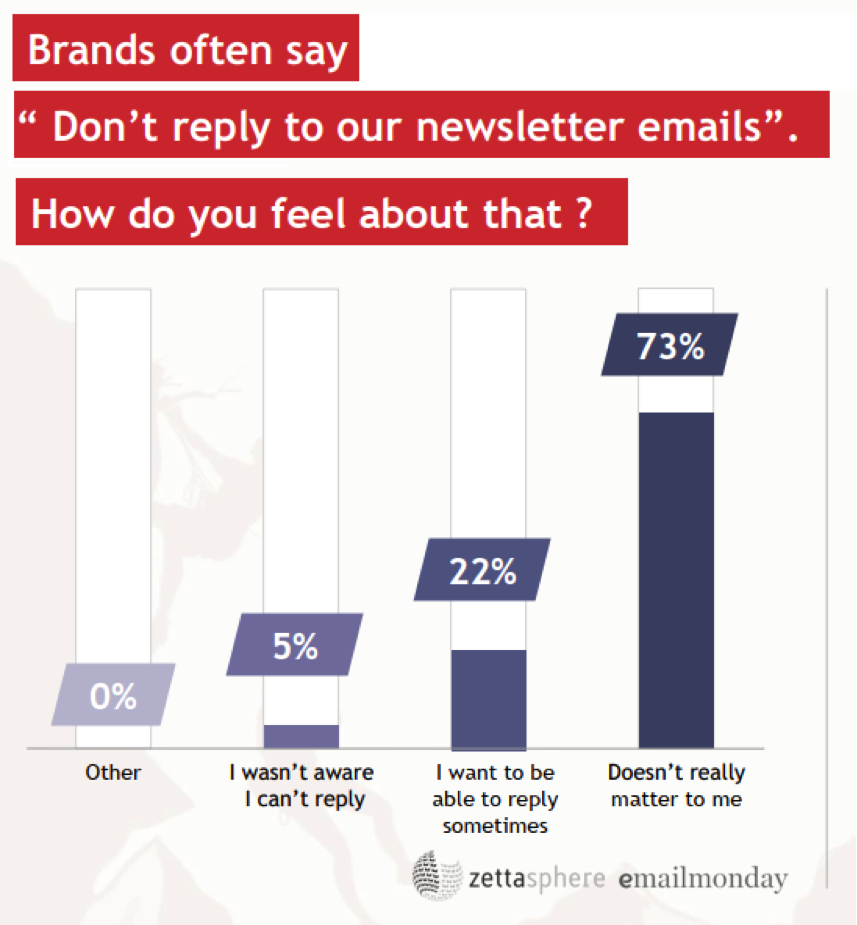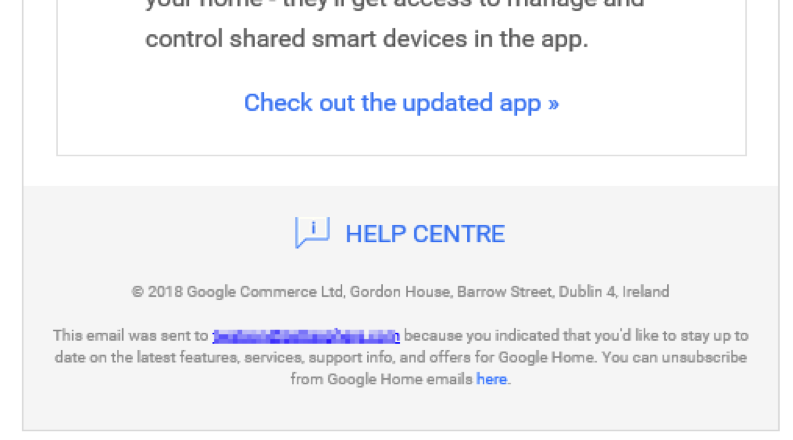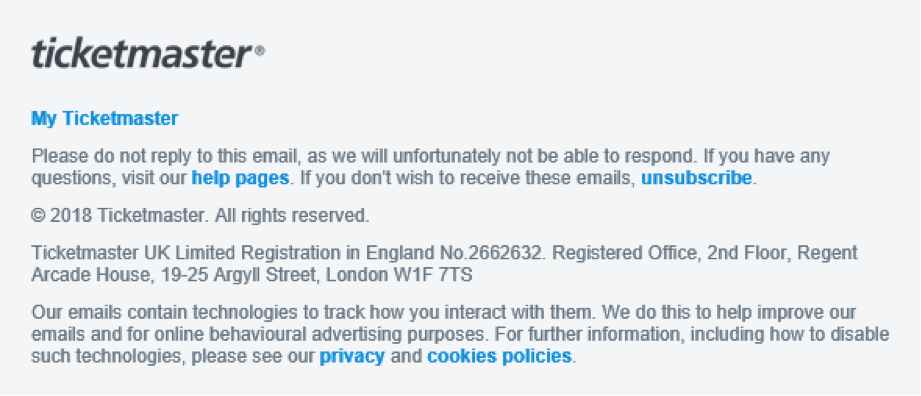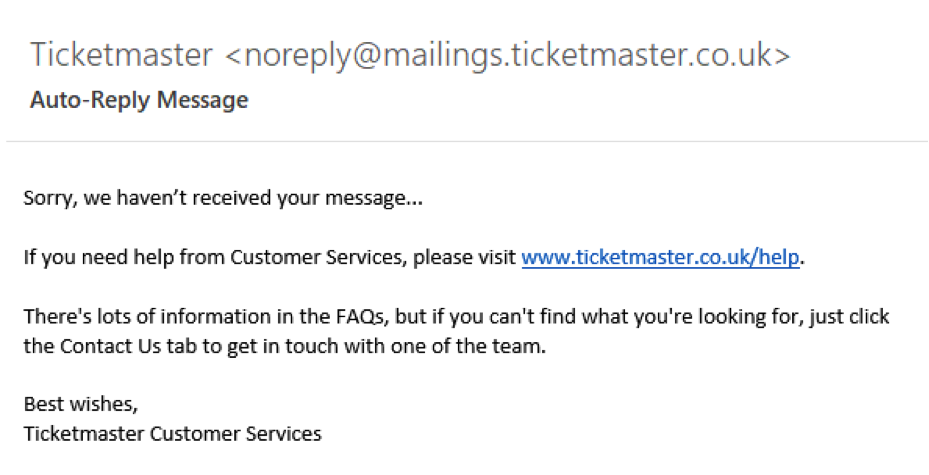Watson: Is Using noreply Really So Bad?
Email pundits frequently pour scorn on brands that send email marketing from a noreply@ email address. Passions run high with noreply.
One email pundit said on Twitter about use of noreply@; “when I personally find ‘we don't want to hear from you’, I mostly start to ignore the brand”.
But what’s the consumer viewpoint? Do they feel the same way and start ignoring a brand using noreply?
The Email Addiction research report revealed what consumers think about noreply email addresses.

22% want to be able to reply.
The consumer research was specifically about use of reply. The key message is that consumers want an easy way to contact a brand.
The vast majority of consumers really aren’t that worried about brands using noreply email addresses. If you’re fighting for the resource to improve aspects of your email marketing, then moving away from a noreply address may be low on the list of opportunities to increase revenue.
But do sign post how consumers can talk to you.
Why noreply is used
Some brands find it hard to process replies. For brands with large lists their from address can receive a lot of unsolicited email. Without good systems to filter real customer replies it can simply be too slow and expensive to process replies.
And any automated filtering needs to be 100% reliable. That’s not so easy, even the experts in spam filtering - Google Gmail and Microsoft Outlook - don’t always get it right.
The worst consumer experience is to say you’ll reply to emails and then don’t because your filter ignored the consumer!
If you do use noreply then being clear and telling consumers that replies are not read is not ignoring the consumer but simply good expectation setting. It’s consumer centric. As long as you also say how your customers can get help.
Brands with extensive online help, FAQs, searchable knowledgebases, live chat and other support channels know they can better service customers by directing them through these channels rather than an email reply.
The key is providing clear information about all the ways to get support and help.
Why you should allow replies
You might be thinking I’m advocating use of noreply. Far from it. I’m pragmatically saying it’s not the huge sin that some pundits will have you believe.
When you can use a reply address there are good reasons to do so.
Girl Scouts of the USA shared how they manage email replies: “They have a two person team and are able to filter out the spammy/garbage replies through their CRM. The ESP handles manual unsubs and deletes out of offices.”
Across many clients I’ve tested not only allowing replies, but making reply the primary call to action. Such as closing copy “Email me back if you need help”.
When you’re promoting high value items and considered purchases, proactively using email as a sales channel brings big benefits.
With one client, sales via email replies are over $1.5m per year vs their website at $2m per year.
There are further benefits, it helps you get to the inbox. One of the strongest signals for building a positive reputation with the ISPs is your customers replying. Encouraging replies helps your deliverability.
The halfway house
Consumers reply to noreply email addresses. Perhaps out of frustration but often because they simply didn’t realise what is meant by noreply.
When using noreply there are two best practices to follow.
Your email footer should clearly state not to reply and provide an easy to use help channel.
Here are two examples.
Whilst Google Home send from noreply and don’t explain it, the footer does have a clear link for their help centre:

Ticketmaster highlight their help pages in their footer:

The second-best practice is to setup an auto-responder, so that should anyone reply they get an email back pointing them to the best way they can get help.
Google Store didn’t do so well with their auto-reply but Ticketmaster provide a customer centric reply. The email below is sent back in seconds to anyone who replies to their marketing noreply address:

Short and simple, where to get self-serve help.
Reply bots?
With advances in AI technology, I hope we’ll see better filtering and AI reply bots. Bots that can handle many of the simple consumer questions, providing intelligent answers automatically. That restores email to a real two-way conversation and conversion channel for all.

 How to resolve AdBlock issue?
How to resolve AdBlock issue? 